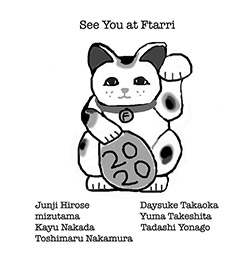
Three days of improvisations from the the 2019 meeting of Osaka-based musicians mizutama, Tadashi Yonago and Kayu Nakada, plus Tokyo residents Junji Hirose, Toshimaru Nakamura, Daysuke Takaoka and Yuma Takeshita in duos and trios, all using original sound-producing devices or creating sound by repurposing instruments or electronic devices in unique ways.
Out of Stock
Quantity in Basket: None
Log In to use our Wish List
Shipping Weight: 3.00 units
Sample The Album:
Mizutama-snap circuits
Toshimaru Nakamura-no input mixing board
Daysuke Takaoka-tuba
Tadashi Yonago-flashlight, sprinkler
Junji Hirose-SSI 4
Kayu Nakada-bug synthesizer
Yuma Takeshita-electrobass
Click an artist name above to see in-stock items for that artist.
UPC: 4589740823224
Label: Ftarri / Meenna
Catalog ID: meenna-874
Squidco Product Code: 30194
Format: CD
Condition: New
Released: 2020
Country: Japan
Packaging: Cardstock Sleeve, sealed
Recorded live at Ftarri, in Tokyo, Japan, on August 11th, 2019, by Hiroyuki Ura.
"On August 11, 2019, Osaka-based musicians mizutama, Tadashi Yonago and Kayu Nakada, plus Tokyo residents Junji Hirose, Toshimaru Nakamura, Daysuke Takaoka and Yuma Takeshita, got together and performed at Ftarri in Suidobashi, Tokyo.
This album documents all three of that day's improvised setsoa duo by mizutama (snap circuits) and Toshimaru Nakamura (no-input mixing board); another duo by Tadashi Yonago (flashlight, sprinkler) and Daysuke Takaoka (tuba); and a trio by Kayu Nakada (bug synthesizer), Junji Hirose (SSI-4) and Yuma Takeshita (electro-bass).
All of these musicians create their own original sound-producing devices, or shape sound by remodeling existing instruments/machines or using/playing them in unusual ways. Hearing collaborations that combine their unique sounds is a rare opportunity in itself, but it doesn't stop there we also get to experience three masterful performances bolstered further by the superb musicianship of these seven artists."-Meenna
Artist Biographies
• Show Bio for Mizutama Mizutama is a Japanese sound artist, part of the Ftarri/Meena collective. ^ Hide Bio for Mizutama • Show Bio for Toshimaru Nakamura "Toshimaru Nakamura is a Japanese musician, active in free improvisation and Japanese onkyo. He began his career playing rock and roll guitar, but gradually explored other types of music, even abandoning guitar, and started working on circuit bending. He uses a mixing console as a live, interactive musical instrument: "Nakamura plays the 'no-input mixing board', connecting the input of the board to the output, then manipulating the resultant audio feedback." Nakamura's music has been described as "sounds ranging from piercing high tones and shimmering whistles to galumphing, crackle-spattered bass patterns." Nakamura founded the ensemble A Paragon of Beauty in 1992. He has recorded solo albums, worked as a session musician, and collaborated with artists including Sachiko M ("a kindred spirit"), Otomo Yoshihide, Keith Rowe, John Butcher, Nicholas Bussmann, Taku Sugimoto, Tetuzi Akiyama, dancer Kim Ito, and drummer Jason Kahn." ^ Hide Bio for Toshimaru Nakamura • Show Bio for Daysuke Takaoka "Daysuke Takaoka Born in Osaka, tuba player Daysuke Takaoka is a Tokyo-based improviser. His tuba playing incorporates a wide range of playing methods and unusual extended techniques. Takaoka attempts to create the complexity of electronic music on the tuba within a predominantly acoustic environment, which he refers to as an "acoustic synthesizer." " ^ Hide Bio for Daysuke Takaoka • Show Bio for Tadashi Yonago "Tadashi Yonago - Genres: Noise, Ambient, Experimental Tadashi Yonago aspires to create bridges between art and the everyday life, presenting his works in different environments and contexts. As a composer and programmer, he performs music and makes site specific installation art with instruments such as trombone and piano, DIY electronics and computer. In an effort to reach unsuspecting audiences in their day-to-day life, he designs and builds street vending machines selling artworks created by himself and his friends. He is the general manager of FLOAT, a former warehouse located on the banks of the Ajigawa River in Osaka, which he turned into an open event space and incidentally, his home. He is also the head editor for print and web magazine “YOSOMI”, in which writers offer their reflections on literature, music, cinema, etc. as well as accounts of their personal life. The aim is to blur the borders between art one can only experience in designated spaces and things that affect individuals in their everyday life. Yonago is a member of electronic ensembles SjQ and SjQ++. The latter received an Award of Distinction at Ars electronica 2013, in the Digital Musics and Sound Art section." ^ Hide Bio for Tadashi Yonago • Show Bio for Junji Hirose "Born March 29, 1955 in Kokubunji, Tokyo. Junji Hirose is one of the most unique artists on the Japanese free improvised music scene. Since the eighties he has developed highly diverse and creative sound, playing tenor and soprano sax and the self-made "noise machine." Hirose started listening to modern jazz in junior high, when he especially liked trumpeters such as Miles Davis and Terumasa Hino. He bought a trumpet and taught himself to play. Having listened to records by Davis's band for some time, he became very interested in John Coltrane, who was in that band. At this time he bought a tenor sax and started to teach himself to play. (He also started to play soprano sax around 1977). Hirose enrolled in Meiji Gakuin University in 1973, and soon joined the student modern jazz club. While he was still a student, a soul group invited him to play in a recording, which came out and became Hirose's record debut. Also as a student, he happened to hear the album Pakistani Pomade, by pianist Alex Schlippenbach's trio, with Evan Parker (sax) and Paul Lovens (drums). This was Hirose's first encounter with European free improvisation, and the music--Parker's in particular--had a strong impact on him, and greatly influenced his musical style. About a year after his graduation in 1978, Hirose began to collaborate more with other musicians. In 1979 he formed the free improvisation trio Free Expansion, with Shuichi Nagano (bass) and Yasuhiro Yamazaki (drums). It was around that time that he got to know Masahiko Kono (trombone) and they began holding concerts together. Hirose also occasionally participated in workshops organized by artists like Toshinori Kondo (trumpet), the late Motoharu Yoshizawa (bass), and Mototeru Takagi (tenor sax), where he played with non-Japanese musicians like Eugene Chadbourne (guitar) and Paul Lovens. Artists with whom Hirose played often in the early 1980s included the late Akira Iijima (guitar), Yoshinori Motoki (guitar), and Yoshisaburo Toyozumi (drums). These gigs were held mainly at the club Far Out in Atsugi, and the performance space Terpsichore in Nakano, Tokyo. At Terpsichore he organized concerts with a variety of artists--musicians, dancers, poets, etc. Hirose released his first solo album, Solo Saxophone, in 1981. When the EastAsia Orchestra was formed in 1982 by Yoshiaki Fujikawa (tenor sax), Hirose was invited to join the group on sax. He left the band soon thereafter, but rejoined them in 1984 for a brief period, during which they toured West and East Germany, Holland, Switzerland, and Austria. This was Hirose's first experience performing outside Japan. In the same year he joined percussionist Masahiko Togashi's band as a sax player, and had played with Togashi in various settings--duo, trios, quartets, orchestras, etc.--until Togashi's death. In a number on the 1981 album Hodgepodge, Hirose used the electric guitar as a "noise machine." After that he began to develop his original self-made instrument for "noise sound." At first he simply placed a lot of junk items and toys around him and made sounds on them; but in the mid-1980s he put them together in a frame. In 1987, when he was to perform at a jazz festival in Leipzig, East Germany, Hirose made the instrument smaller so he could carry it more easily, and found this version to be better than the larger one. Thus it became the prototype for his current noise machine. In the late 1980s, Hirose played this instrument much more than he played the sax. At about that time he met Otomo Yoshihide (turntables and guitar), and starting in 1988 played duos with him over a period of several years. In 1989 they made the duo album Silanganan Ingay. While Hirose used mainly the noise machine in duo concerts, he joined Otomo's band Ground-Zero as a sax player. In 1991 he was a guest performer with the band, and in 1992-93 he was a regular member. He also played sax in Ground-Zero's final concert in Tokyo in 1998. In 1989, Bassist Daisuke Fuwa formed the orchestra Shibusashirazu, which incorporates jazz, dance, theater, and art, and since then Hirose has occasionally played sax with the group. He was also a member of drummer Masahiro Uemura's avant rock/jazz band P.O.N. for the entire duration of its existence (1991 to 1999). Around the mid-1990s, he joined video artist Hideaki Sasaki's trio project Stereodrome with Uchihashi Kazuhisa Uchihashi (guitar and effects). Hirose performed at the Moers Jazz Festival in 1993 and 1998, as a member of Ground-Zero and Shibusashirazu orchestra respectively." ^ Hide Bio for Junji Hirose • Show Bio for Kayu Nakada Kayu Nakada: "Circuit boards from electronic instruments are extracted and short circuited with solder. These exposed boards produce sounds on their own, but also start to interact as I stack them with inserted sheets of metal, or suspend them to dangle and fold over each other. This is how I perform. Originally, I was inspired by the prepared piano. I have come to consider my practice of circuit bending as an extension of this, because I physically and electronically modify the internal structure of commercial synthesizers and drum machines, and work with timbre that emerges from a personally created state. At the same time, I also explore the unpredictable and indeterminate that occur from the short circuits. The stacking and dangling of circuit boards or the inserting of metal are techniques that I discovered to create more indeterminacy and unpredictability in the sounds that appear. I have created more than 40 of these circuits, which I call "Bug Synths (Bagushinse)." I select 6 to 8 of these each time I perform. I regularly play in live venues and art spaces as a solo performer, but also actively play in improvisational groups or exhibit these boards as sound installations." ^ Hide Bio for Kayu Nakada • Show Bio for Yuma Takeshita Yuma Takeshita, Born in Osaka in 1982. Yuma Takeshita started playing experimental / improvised music around 2001. After moving to Tokyo in 2011 he began constructing his own instruments by modifying an electronic-bass guitar with different sound modules and machines. ^ Hide Bio for Yuma Takeshita
7/15/2025
Have a better biography or biography source? Please Contact Us so that we can update this biography.
7/15/2025
Have a better biography or biography source? Please Contact Us so that we can update this biography.
7/15/2025
Have a better biography or biography source? Please Contact Us so that we can update this biography.
7/15/2025
Have a better biography or biography source? Please Contact Us so that we can update this biography.
7/15/2025
Have a better biography or biography source? Please Contact Us so that we can update this biography.
7/15/2025
Have a better biography or biography source? Please Contact Us so that we can update this biography.
7/15/2025
Have a better biography or biography source? Please Contact Us so that we can update this biography.
Track Listing:
1. Mizutama, Toshimaru Nakamura 18:32
2. Daysuke Takaoka, Tadashi Yonago 25:12
3. Junji Hirose, Kayu Nakada, Yuma Takeshita 29:58
Improvised Music
Free Improvisation
Electro-Acoustic
Electro-Acoustic Improv
Asian Improvisation & Jazz
Duo Recordings
Search for other titles on the label:
Ftarri / Meenna.


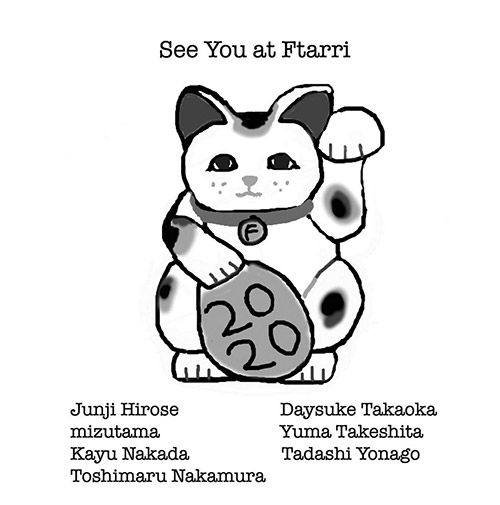

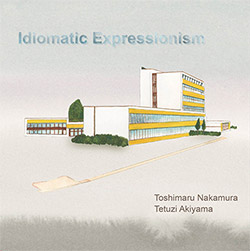
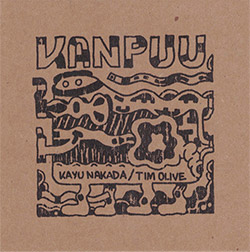
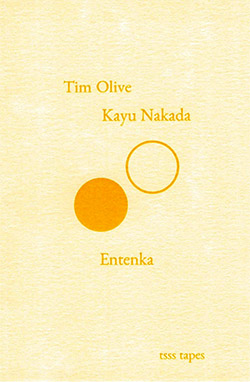
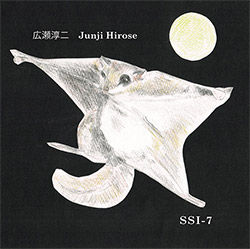
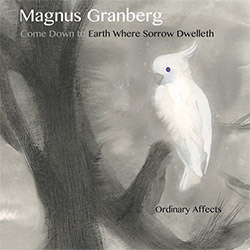
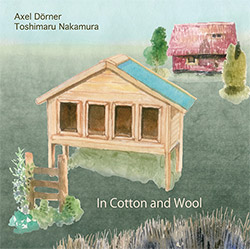






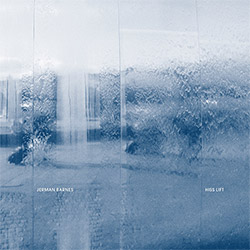
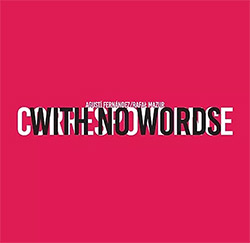




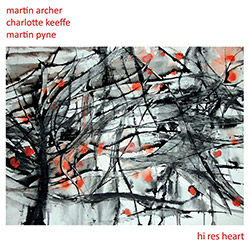

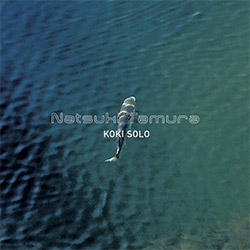
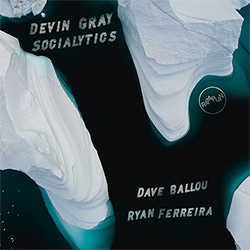


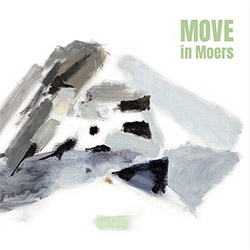




![BlueRing Improvisers: Materia [2 CDs]](https://www.teuthida.com/productImages/misc4/36513.jpg)




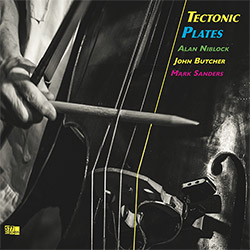


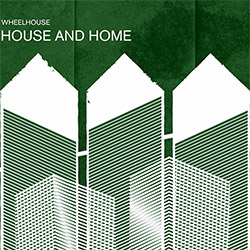
![Wheelhouse (Rempis / Adasiewicz / McBride): House And Home [VINYL]](https://www.teuthida.com/productImages/misc4/36462.jpg)
![+DOG+: The Light Of Our Lives [2 CDs]](https://www.teuthida.com/productImages/misc4/36009.jpg)


![Parker, Evan / Jean-Marc Foussat: Insolence [VINYL]](https://www.teuthida.com/productImages/misc4/36398.jpg)










![Deupree, Jerome / Sylvie Courvoisier / Lester St. Louis / Joe Morris: Canyon [2 CDs]](https://www.teuthida.com/productImages/misc4/36404.jpg)



![Eventless Plot | Haarvol: The Subliminal Paths [CASSETTE + DOWNLOAD]](https://www.teuthida.com/productImages/misc4/36232.jpg)










![Eventless Plot | Francesco Covarino: Methexis [CASSETTE + DOWNLOAD]](https://www.teuthida.com/productImages/misc4/36231.jpg)



![Das B (Mazen Kerbaj / Mike Majkowski / Magda Mayas / Tony Buck): Love [VINYL]](https://www.teuthida.com/productImages/misc4/36329.jpg)


![Eternities: Rides Again [CASSETTE]](https://www.teuthida.com/productImages/misc4/36247.jpg)
![Lopez, Francisco: Untitled (2021-2022) [2 CDs]](https://www.teuthida.com/productImages/misc4/36438.jpg)






![Money : Money 2 [2 CDs]](https://www.teuthida.com/productImages/misc4/35894.jpg)




![Klinga, Erik: Elusive Shimmer [VINYL]](https://www.teuthida.com/productImages/misc4/36258.jpg)
![CHANGES TO blind (Phil Zampino): Volume 9 - I Wave on a Fine Vile Mist [CD + DOWNLOAD]](https://www.teuthida.com/productImages/misc4/36061.jpg)

![Wallmart / Rubbish: Asset Protection [split CD]](https://www.teuthida.com/productImages/misc4/35900.jpg)


![+Dog+: The Family Music Book Vol. 5 [2 CDs]](https://www.teuthida.com/productImages/misc4/35897.jpg)
![Kuvveti, Deli : Kuslar Soyledi [CASSETTE w/ DOWNLOAD]](https://www.teuthida.com/productImages/misc4/36107.jpg)

![Brown, Dan / Dan Reynolds: Live At The Grange Hall [unauthorized][CASSETTE]](https://www.teuthida.com/productImages/misc4/36245.jpg)








![Palestine, Charlemagne / Seppe Gebruers: Beyondddddd The Notessssss [VINYL]](https://www.teuthida.com/productImages/misc4/36206.jpg)
![Palestine, Charlemagne / Seppe Gebruers: Beyondddddd The Notessssss [NEON GREEN VINYL]](https://www.teuthida.com/productImages/misc4/36207.jpg)

![Laubrock, Ingrid: Purposing The Air [2 CDs]](https://www.teuthida.com/productImages/misc4/35639.jpg)

![Yoko, Ono / The Great Learning Orchestra: Selected Recordings From Grapefruit [2 CDs]](https://www.teuthida.com/productImages/misc4/35841.jpg)









![Zorn, John / JACK Quartet: The Complete String Quartets [2 CDs]](https://www.teuthida.com/productImages/misc4/35609.jpg)

![Lonsdale, Eden: Dawnings [2 CDs]](https://www.teuthida.com/productImages/misc4/35480.jpg)



![Sorry For Laughing (G. Whitlow / M. Bates / Dave-Id / E. Ka-Spel): Rain Flowers [2 CDS]](https://www.teuthida.com/productImages/misc4/35985.jpg)

![Rolando, Tommaso / Andy Moor : Biscotti [CASSETTE w/ DOWNLOADS]](https://www.teuthida.com/productImages/misc4/36106.jpg)


![Electric Bird Noise / Derek Roddy: 8-10-22 [CD EP]](https://www.teuthida.com/productImages/misc4/35970.jpg)








![Elephant9 : Mythical River [VINYL]](https://www.teuthida.com/productImages/misc4/34624.jpg)



![Elephant9 with Terje Rypdal: Catching Fire [VINYL 2 LPs]](https://www.teuthida.com/productImages/misc4/35355.jpg)
![Deerlady (Obomsawin, Mali / Magdalena Abrego): Greatest Hits [VINYL]](https://www.teuthida.com/productImages/misc4/34876.jpg)







![Surplus 1980: Illusion of Consistency [CD]](https://www.teuthida.com/productImages/misc4/35069.jpg)
![Staiano, Moe: Away Towards the Light [VINYL + DOWNLOAD]](https://www.teuthida.com/productImages/misc4/35037.jpg)
![Coley, Byron: Dating Tips for Touring Bands [VINYL]](https://www.teuthida.com/productImages/misc4/17906.jpg)

![Lost Kisses: My Life is Sad & Funny [DVD]](https://www.teuthida.com/productImages/misc4/lostKissesDVD.jpg)